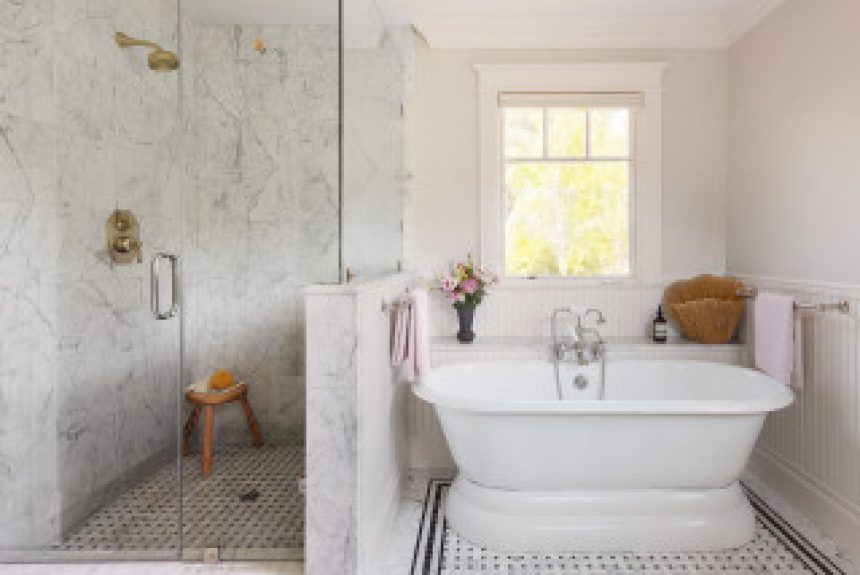1. Start With Location and Size
Where would you like your shower to stand? A corner is the most common spot, but the center of a room or a separate enclosed area like a water closet might be best for your layout or lifestyle.
Keep in mind that moving or adding plumbing costs money, sometimes a lot of money. So if that’s not in your budget, try to keep your updated shower in the same location as your previous one.
If you’re wondering how much space you’ll need, consider that the most popular shower widths are 32, 36 and 60 inches. (Lengths will vary.) Shower dimensions can be as small as 32 by 32 inches, but most people prefer a shower that’s at least 36 by 48 inches. Shower ceiling heights typically fall between 84 and 120 inches, depending on the space and the design.
You’ll also want to consider the dimensions of other elements in your bathroom before deciding on your shower size. For example, the size of your planned vanity might require a reduced shower space, so you might want to consider going for a smaller vanity to get a larger shower.
Another thing to consider is increasing the size of your bathroom to get the shower size you want. Talk with your design pro about opportunities to steal space from an adjacent closet or bedroom or even whether relocating the bathroom to another room in the house is the best move.
Find a bathroom designer near you



Where would you like your shower to stand? A corner is the most common spot, but the center of a room or a separate enclosed area like a water closet might be best for your layout or lifestyle.
Keep in mind that moving or adding plumbing costs money, sometimes a lot of money. So if that’s not in your budget, try to keep your updated shower in the same location as your previous one.
If you’re wondering how much space you’ll need, consider that the most popular shower widths are 32, 36 and 60 inches. (Lengths will vary.) Shower dimensions can be as small as 32 by 32 inches, but most people prefer a shower that’s at least 36 by 48 inches. Shower ceiling heights typically fall between 84 and 120 inches, depending on the space and the design.
You’ll also want to consider the dimensions of other elements in your bathroom before deciding on your shower size. For example, the size of your planned vanity might require a reduced shower space, so you might want to consider going for a smaller vanity to get a larger shower.
Another thing to consider is increasing the size of your bathroom to get the shower size you want. Talk with your design pro about opportunities to steal space from an adjacent closet or bedroom or even whether relocating the bathroom to another room in the house is the best move.
Find a bathroom designer near you